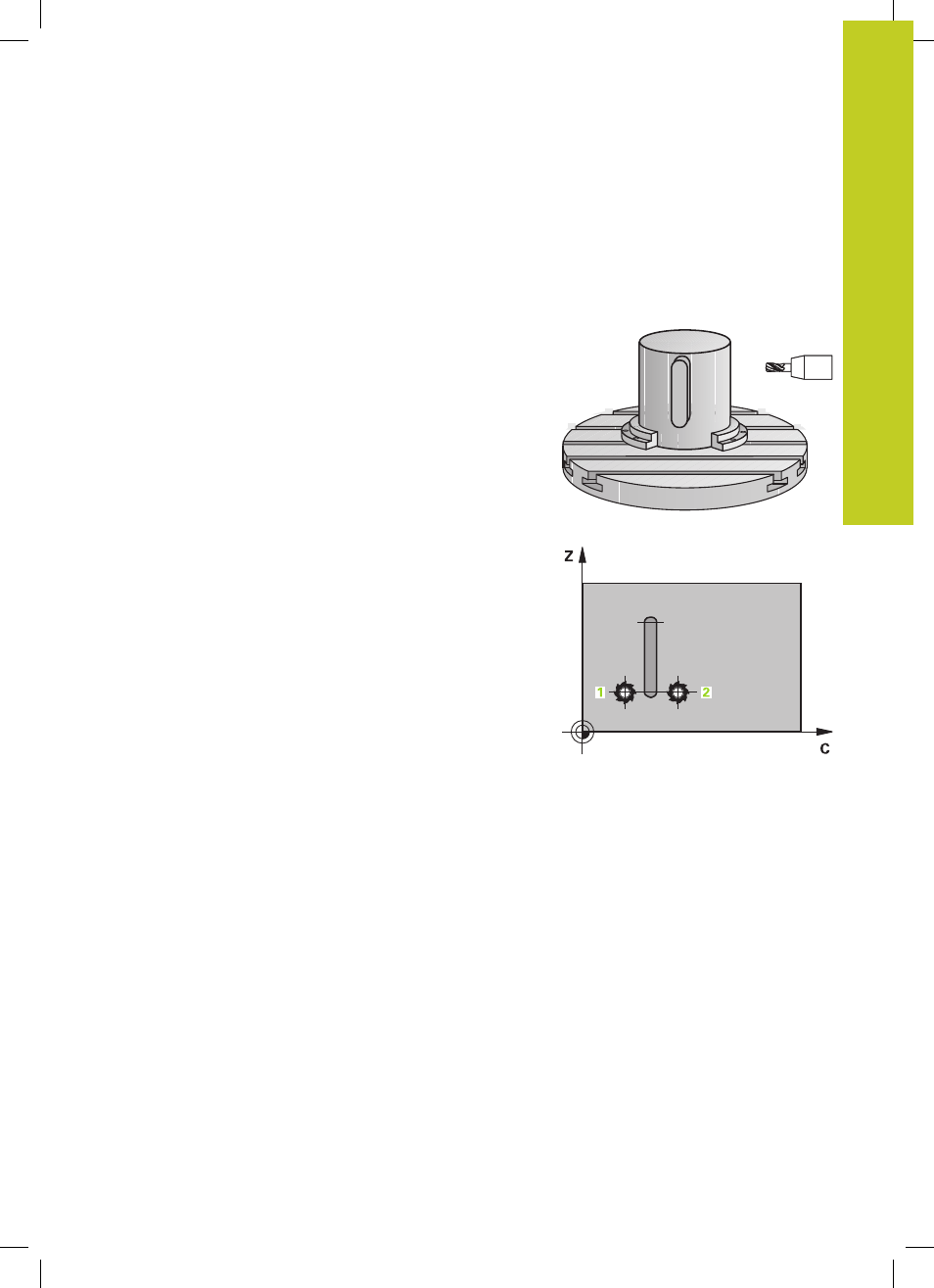Cycle run – HEIDENHAIN TNC 320 (34055x-06) Cycle programming User Manual
Page 185

CYLINDER SURFACE Ridge milling (Cycle 29, DIN/ISO: G129,
software option 1)
8.4
8
TNC 320 | User's Manual Cycle Programming | 5/2013
185
8.4
CYLINDER SURFACE Ridge milling
(Cycle 29, DIN/ISO: G129, software
option 1)
Cycle run
This cycle enables you to program a ridge in two dimensions and
then transfer it onto a cylindrical surface. With this cycle the TNC
adjusts the tool so that, with radius compensation active, the walls
of the slot are always parallel. Program the midpoint path of the
ridge together with the tool radius compensation. With the radius
compensation you specify whether the TNC cuts the ridge with
climb milling or up-cut milling.
At the ends of the ridge the TNC always adds a semicircle whose
radius is half the ridge width.
1 The TNC positions the tool over the starting point of machining.
The TNC calculates the starting point from the ridge width and
the tool diameter. It is located next to the first point defined in
the contour subprogram, offset by half the ridge width and the
tool diameter. The radius compensation determines whether
machining begins from the left (
1
, RL = climb milling) or the
right of the ridge (
2
, RR = up-cut milling).
2 After the TNC has positioned to the first plunging depth, the tool
moves on a circular arc at the milling feed rate Q12 tangentially
to the ridge wall. If so programmed, it will leave metal for the
finishing allowance.
3 At the first plunging depth, the tool mills along the programmed
ridge wall at the milling feed rate Q12 until the stud is
completed.
4 The tool then departs the ridge wall on a tangential path and
returns to the starting point of machining.
5 Steps 2 to 4 are repeated until the programmed milling depth
Q1 is reached.
6 Finally, the tool retracts in the tool axis to the clearance height
or to the position last programmed before the cycle.